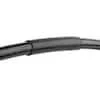How do you use heat shrinkable tubing?
2023-12-14
Using heat shrinkable tubing is relatively straightforward, and it involves a few simple steps. Here's a general guide on how to use heat shrinkable tubing:
1. Select the Right Tubing Size: Choose heat shrink tubing that fits the diameter of the object or wire you want to cover. The tubing should be large enough to slide over the component easily but small enough to provide a snug fit after shrinking.
2. Prepare the Surface: Ensure that the surface of the object or wires is clean and free from any dirt, grease, or debris. This helps the tubing adhere properly and provides a better seal.
3. Cut the Tubing to the Desired Length: Use a sharp utility knife or scissors to cut the heat shrink tubing to the required length. Make sure it's slightly longer than the area you want to cover to ensure complete insulation.
4. Slide the Tubing onto the Object: Place the cut tubing over the object or wires that need protection. Ensure that it covers the desired area completely and extends beyond the edges slightly.
5. Apply Heat: Use a heat source to shrink the tubing. Common methods include using a heat gun, a heat shrink oven, or even a hairdryer. Apply heat evenly to the tubing while keeping the heat source moving to avoid overheating or melting the tubing in one spot.
6. Shrink the Tubing: As you apply heat, the tubing will start to shrink and conform to the shape of the object underneath. You'll notice it becoming snug around the wires or component. Ensure that the tubing shrinks uniformly without leaving any gaps or bubbles.
7. Cool Down and Inspect: Once the tubing has shrunk completely and conforms tightly to the object, allow it to cool down. Inspect the covered area to ensure there are no exposed parts and that the tubing has formed a secure and waterproof seal.

Safety Tips:
- Use caution when applying heat to avoid burns or damage to the tubing or surrounding components.
- Maintain a safe distance between the heat source and the tubing to prevent overheating or melting.
- Work in a well-ventilated area to avoid inhaling fumes released during the shrinking process.
Following these steps should help you effectively use heat shrinkable tubing to provide insulation, protection, and strain relief to wires, cables, or other components.


